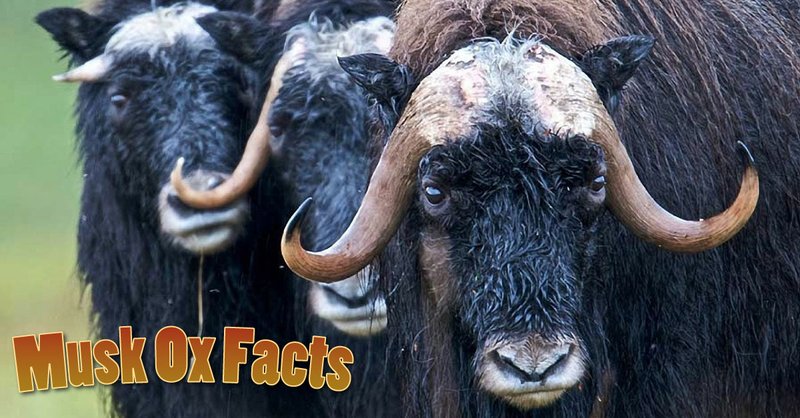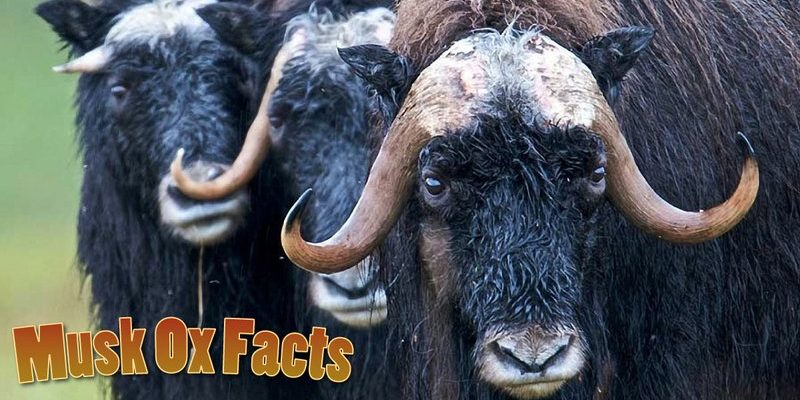
Muskoxen are not only fascinating because of their appearance; they’ve adapted to some of the most extreme conditions on Earth. They’re like furry tanks, built to withstand the cold and survive in environments that would leave most animals shivering in their boots. Whether you’re a nature enthusiast or just curious about wildlife, discovering the muskox’s quirks can be quite a delightful journey.
Let’s dive into some eye-opening facts about the muskox that will make you appreciate this unique animal even more!
1. Ancient Survivors
Muskoxen have been around for a long time—like, really long! They first appeared during the Ice Age, around 2 million years ago. Picture them roaming the glaciers and tundra while mammoths and saber-toothed cats were still doing their thing. Isn’t it incredible to think that these animals have survived through various climatic shifts and environmental changes?
Now, here’s the kicker: they’re not actually related to either cows or sheep, though they may look like a mix. Instead, muskoxen belong to a group called Caprinae, which also includes goats. Their unique evolution helped them adapt to their cold surroundings, and they’ve managed to stick around while many other species have gone extinct.
2. Thick, Luxurious Fur
One of the first things you notice about a muskox is its thick coat, which is no ordinary fur! Underneath the long, shaggy hair lies a soft layer of underwool called qiviut. This underwool is incredibly warm, even more so than sheep’s wool. In fact, it’s eight times warmer than sheep’s wool, making it a prized material for clothing!
You might be wondering how this keeps them warm: the long outer coat protects them from the wind and snow, while the inner layer traps heat close to their bodies. So, when you think about how freezing it gets up north, it’s amazing how these creatures thrive!
3. Unique Social Structures
Muskoxen are social animals that live in herds, usually consisting of 10 to 30 members. These groups are essential for their survival, especially in harsh conditions. Here’s the thing: when faced with predators, like wolves, muskoxen have a fascinating defense mechanism. They’ll form a circle, with adults on the outside and the young ones in the center.
This protective strategy helps keep the calves safe while the adults ward off the predators. It’s remarkable how nature crafts such intricate behaviors for survival. Imagine being part of a close-knit family that looks out for each other no matter what!
4. They Can Be Quite Vocal
Ever heard a muskox? They aren’t shy about expressing themselves! Muskoxen use a range of vocalizations to communicate with each other. From grunts and bellows to even snorts, these sounds can convey everything from distress to contentment.
Next time you see a muskox, listen closely. You might catch a glimpse of their social lives through their vocal antics. Just picture a bunch of hairy beasts chatting away in the frigid tundra, each sound carrying meaning.
5. Grazers by Nature
What do muskoxen eat? They’re herbivores, dining mainly on grasses, mosses, and lichens, especially during the long Arctic winters. Their bodies are designed for foraging, with strong hooves that can dig through the snow to find food.
This behavior is fascinating because it shows how they’ve adapted to their environment. While many animals retreat south for the winter, muskoxen stay put, relying on their diet of hardy plants. This determination helps them thrive even when food is scarce.
6. The Muskox’s Unique Name
You might be curious about the name “muskox.” It actually comes from the strong musk scent the males release, especially during mating season. This odor helps attract females and can be quite powerful!
The smell is a part of their courtship routine, making them a bit like a romantic in a smelly way. Picture a big, hunky muskox strutting around trying to impress the ladies with its scent. It’s a unique part of their charm!
7. Conservation Status
Muskoxen faced significant threats due to overhunting and climate change in the past. But conservation efforts have helped their populations rebound, especially in places like Alaska and Canada. Isn’t it heartening to see how humans can positively impact wildlife?
Today, they are considered a species of Least Concern, but that doesn’t mean we should take them for granted. Continuing to protect their habitats and monitoring their populations remains crucial. After all, a strong conservation effort can ensure muskoxen roam the tundra for generations to come.
8. Their Role in the Ecosystem
Muskoxen play a vital role in their ecosystem. By grazing on a variety of plants, they help shape the vegetation in their habitats. This, in turn, supports other wildlife that relies on those same plants.
Think of them as nature’s lawnmowers! Their grazing habits promote a healthy balance within the ecosystem, enabling diverse plant life to flourish, which supports other animals and insects. It’s a beautiful cycle of life that shows how interconnected everything truly is.
9. Muskoxen and Climate Change
As climate change continues to impact the Arctic regions, muskoxen are feeling the effects. Rising temperatures can lead to food scarcity, habitat loss, and even changes in predator populations. Climate resilience is now essential for their survival—meaning how well they can adapt to these changes.
Researchers are studying how these animals cope with shifting environments and what that means for their future. It’s a critical time for understanding how we can help protect them and their home in a world that keeps changing.
10. Interesting Cultural Connections
Muskoxen have significant cultural ties to the Indigenous peoples of the Arctic. They have been a source of food, clothing, and tools for thousands of years. The strong, warm qiviut is still highly valued in textile crafts, showcasing how these animals contribute to human lives and traditions.
You might find it heartwarming to think about centuries of history connecting humans to muskoxen. From ancient hunting practices to current conservation efforts, these animals have influenced cultures across the Arctic region.
In conclusion, the muskox is truly a remarkable creature, perfectly adapted to some of the most challenging environments on Earth. With their incredible fur, unique social structures, and vital role in the ecosystem, it’s no wonder they continue to fascinate us. As we learn more about them, let’s also remember the importance of protecting these incredible animals and their habitats for the future.

